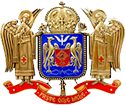

Today, 6 December 2015, the Romanian Orthodox Church celebrates Saint Hierarch Nicholas. On this day, the church of “Saint Nicholas” – Ghica, university chapel in Bucharest, whose patron saint is Saint Nicholas, celebrated its patronal feast day.
His Beatitude Daniel, Patriarch of the Romanian Orthodox Church, attended the Divine Liturgy celebrated by the priests of the church and delivered a sermon in which he showed that Saint Hierarch Nicholas represents a model of mercy and humbleness.
“Saint Nicholas is perhaps the most popular saint in the Eastern and Western Churches. He is the saint most beloved by children, as well as by adults. He was born in Patara town of Asia Minor, in the second part of the 3rd century and lived in the first part of the 4th century, until 345. His parents, Teofan and Nona, died soon because of an epidemic, and his uncle, Bishop Nicholas of Patara, raised him in virtue and prepared him to serve the Church. At the right age his uncle included him in the clergy of the Church and ordained him priest. Later on, Saint Nicholas became bishop of Myra of Lycia. He fought for defending the faith during the persecutions of the pagan emperors and was imprisoned. He was released from prison when Saint Constantine the Great has become emperor of the Romans”, His Beatitude said.
The Patriarch of Romania has also spoken about the spiritual teachings of the text from the Gospel read today in all the places of worship on the healing of the crippled woman: “We see first of all that nobody in the synagogue asked Jesus to heal this crippled woman and neither dared she to ask Him anything. Therefore, Jesus Christ, our Saviour called this woman to Him out of His own will and healed her, intending to show that not always we should expect to be asked to help somebody. If we can help somebody who is suffering we must do it out of our own initiative”.
His Beatitude underlined the fact that the crippled woman is a spiritual model for us, especially during this preparatory period for the Feast of the Nativity of the Lord: “Jesus Christ, our Saviour, appreciated three virtues of the crippled woman, plus the fourth one after her healing. The first virtue was the strong faith of the crippled woman. This is why she is called daughter of Abraham, because Abraham is considered the father of faith. In spite of her burdensome disease, this crippled woman never considered that her disease was an excuse for not meeting God and the community of the synagogue. She regularly came every Saturday to the synagogue, maybe more than other faithful, to thank God for her existence and seek His help for salvation. The second virtue that Christ, the Lord, appreciated was her deep humbleness. Shenever asked for any help, but let herself in God’s hands bearing her troublesome disease with humbleness. The third virtue of the crippled woman was her long patience. When a human falls ill he rather often cavils at God or at those around who do not understand his pain, but this woman who had been crippled for 18 years never complained, grumbled, or reproached anybody for her disease. This is why Christ, our Lord, who knew people’s souls, called her and healed her unexpectedly. She became used to thinking she would be crippled until her death. But, after she was healed, the Gospel tells us that she was glorifying God. Thus, one more virtue was added to those mentioned above: gratitude. Rather often, when people are delivered from troubles they forget very quickly to thank God and the persons through whom He worked for their benefit. Therefore, this crippled woman becomes a teacher for us, especially during this preparatory time for the Feast of the Nativity of the Lord. We see that God heals her when He thinks and how He thinks. Very often God does not answer when He is called, while some other times He calls us when we do not expect. Anyway, He thinks divinely, not humanly”.
In the end, His Beatitude Daniel offered several liturgical and pastoral books to the university chapel and small icons of Saint Hierarch Nicholas to the faithful present. His Beatitude offered bags with sweets, books and magazines for children to the young people from the “Three Saints Hierarchs” secondary school in Bucharest who participated in the Divine Liturgy.